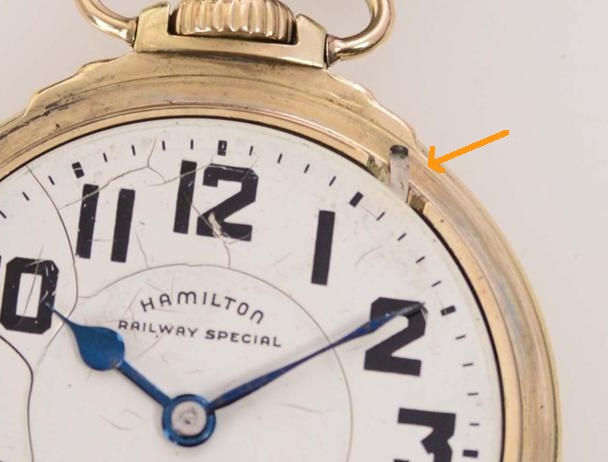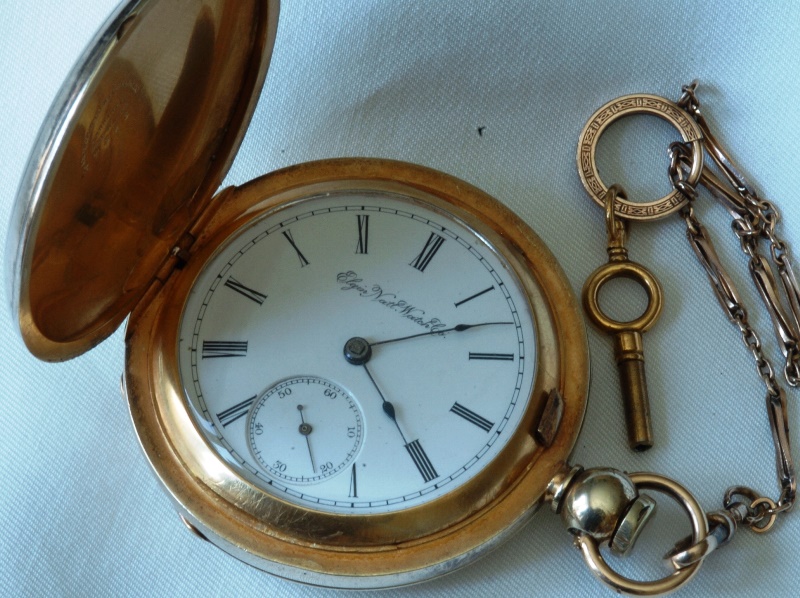What Is A Lever-Set Watch?
Most modern watches are set on the crown. It comes as no surprise, then, that many current horological fans become flummoxed when dealing with old lever-set watches. As a part of the greater watch and clock making industry, we get plenty of folks new to lever-set watches asking us “just how the heck do I set this thing?” (to paraphrase). Well, before getting into the nuances of setting the time on a lever-set watch, we’ll be comparing differences between lever-set and pendant-set (or set-on-the-crown) watches. And what’s more, we’ll also be throwing out an honorable mention regarding a third less-common setting mechanism. Let’s get started!
Why Lever-Set Instead of Pendant-Set?

There are some pretty historical reasons why lever-set watches became popular in their heyday. During the 19th century the railroad industry was building steam, globally. Alongside this growing industry came varying timekeeping standards on railways. This became incredibly unsafe. So, by around the middle of the century national standards started taking root. One of the biggest standardizing features was a lever-set mechanism on railroad pocket watches. It was a feature that differed from pendant-set (crown-set) watches in that it could not easily snag. This is why lever-set watches became popular—they were harder to set but even harder to accidentally un-set. When a difference of one or two minutes could mean the difference between getting to the station on time and a head on collision, these mechanisms became crucial in safe travel. Pendant-set watches remained common during this time but lever-set watches were a 19th century sensation that carried on for plethora years following.
How Lever-Set Works
An important note—lever-set watches still wind on the crown and require it to set the hands. Essentially, lever-set watches require a lever release before the hands can be manipulated via the crown. Most lever-set watches require unscrewing, prying off, or otherwise removing the bezel and crystal of the watch (that’s the part that stumps lots of folks). This gives the person setting the watch access to the lever release. Once the lever has been swung away from the dial, the hands can be moved via the crown. After lining up the time all the owner has to do is swing the lever back to its original position, and then replace the bezel. If you didn’t have to remove a bezel then you have what’s called a “hunting case”. When watches are housed in these cases, their levers are accessible outside of the bezel.
The key difference between lever-set watches and pendant-set watches is how the hands are engaged. Pendant-set watches free up the hands for movement by pulling out a stem—instead of requiring a separate lever. This is far more convenient in many respects, but lever-set watches (especially pocket watches) have had their utility and are so hands-on that they add an extra personal relationship with a timekeeper.
A Third Way

An honorable mention for today’s post is the key-set style of watch. Early pocket watches didn’t have fancy crowns, levers, or stems to set the hands. That’s right, our great great great, etc… ancestors had to set their pocket watches with a key—like a clock. As it were, one had to use a key to both wind and set in the early years of watches. The eventual rise of pendant-set and lever-set watches had its ties to this clock-style manipulation. Pendant in the phrase “pendant-set” has the same Latin origin as “pendulum”. Some of the oldest personal watches were made into pendants to wear around the neck, swinging like pendulums from their wearer. Once the lever-sets started rolling in, both lever-set and pendant-set were the dominant setting styles. However, there are still plenty of timepieces out there that require a key set (just don’t go asking Casio for one).
The Three Amigos
All three of these setting styles have been translated to personal timepieces in one way or another for an incredible amount of time. Even wristwatches have incorporated these styles of watch-setting in years prior. However, the most obvious and common setting mechanism is a pendant-set on modern watches. That being said—old mechanical watches are still quite ubiquitous. Google searching, pawn shops, grandma’s attic, and other various venues have lever-set and key-set pocket watches available. So if you put an ear to the ground, you just might be able to grab all three. Each has a history that’s tied to how the horological industry has evolved over the centuries. All cut from the same pocket-watch cloth, they’re unified by their histories—riding their own horses side-by-side across the frontiers of watchmaking.
Times Ticking has been in operation for more than 30 years, since 1982. We have performed watch repair for customers both locally and internationally. If it Ticks! We KNOW it! Our team of watch repair technicians have a combined experience in watchmaking of over 120 years.

